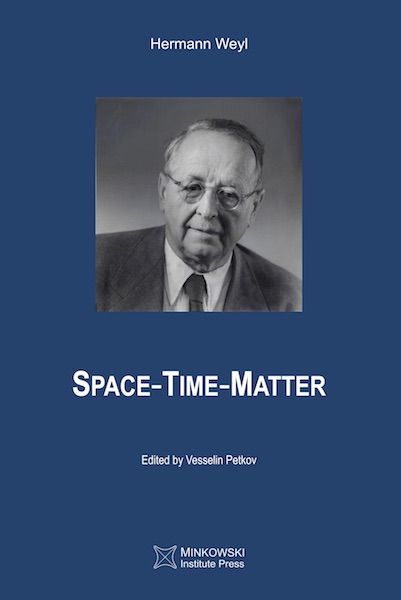 |
||||||||
|
||||||||
|
|
If you prefer buying ebooks directly (without opening an account) you can pay via PayPal by sending the amount to mip@minkowskiinstitute.org. Your ebook(s) will be emailed to you either immediately or after some delay depending on where in the world you are (this option is operated manually). Description: This is a new publication of Hermann Weyl's book Space-Time-Matter, which was first published in German in 1919 and the English translation was published in 1922. [The initial intention was to modernize the notations while typesetting it in LaTeX. We knew it won't be easy but it turned out to be significantly more time consuming than anticipated. So we just typeset the 1922 public domain book in LaTeX. And even that was not easy - there were many typos and the 1919 German publication was constantly consulted. We have not given up the idea - maybe in the future with the assistance of colleagues.] What makes Weyl's book invaluable is that, in addition to his masterfully presented lectures on special and general relativity (starting with a helpful introduction to tensor analysis), he was the first (and essentially the only one so far) who tried to reconcile two seemingly unreconcilable facts - Minkowski's discovery (deduced from the failed experiments to detect absolute motion) of the spacetime structure of the world (that it is a static four-dimensional world containing en bloc the entire history of the perceived by us three-dimensional world) and the inter-subjective fact that we are aware of ourselves and the world only at one single moment of time - the present moment (the moment now) - which constantly changes. Weyl reached the conclusion that it is our consciousness (somehow "traveling" in the four-dimensional world along our worldlines) which creates our feeling that time flows. Unfortunately, Weyl's reconciliation of the above facts has not been rigorously examined so far; the apparent contradiction that the consciousness "travels" in the "frozen" four-dimensional world - spacetime - is not an excuse because Weyl had surely been aware of it and nevertheless "went public" with his proposed resolution. Here are two quotes which provide an idea of Weyl's line of thought: "Since the human mind first wakened from slumber, and was allowed to give itself free rein, it has never ceased to feel the profoundly mysterious nature of time-consciousness, of the progression of the world in time, - of Becoming." "The great advance in our knowledge described in this chapter consists in recognising that the scene of action of reality is not a three-dimensional Euclidean space but rather a four-dimensional world, in which space and time are linked together indissolubly. However deep the chasm may be that separates the intuitive nature of space from that of time in our experience, nothing of this qualitative difference enters into the objective world which physics endeavours to crystallise out of direct experience. It is a four-dimensional continuum, which is neither "time" nor "space." Only the consciousness that passes on in one portion of this world experiences the detached piece which comes to meet it and passes behind it, as history, that is, as a process that is going forward in time and takes place in space."
|
|||||||
